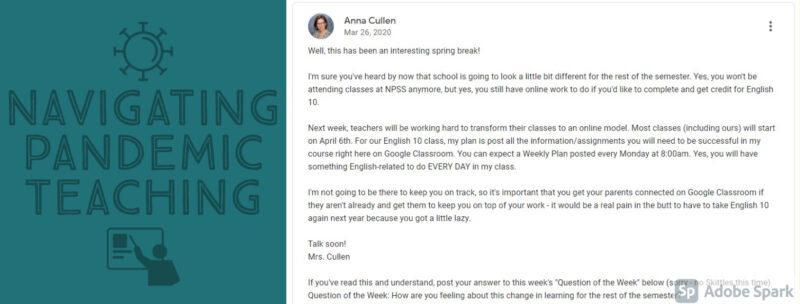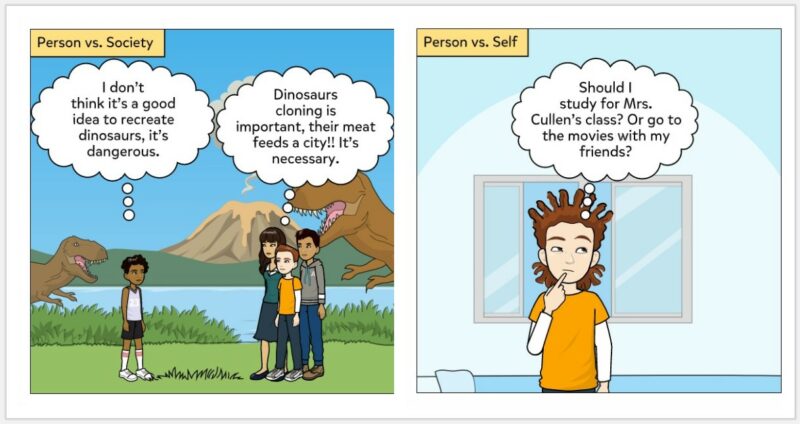- Describe and discuss one or two elements from the Bates or Watters chapters that allowed you to think deeper about your past or present teaching.
For this week’s blog post, the two elements from the Bates and Watters chapter that stuck with me were (1) the example of B.F. Skinner’s positive reinforcement and its impact on teaching tools in my classroom today (Watters, 2014) and (2) the launch of the world wide web in 1991 and how it has completely transformed education since (Bates, 2015)
(1) As a previous psychology undergraduate, when Skinner’s name popped up in Watters (2014) article, my ear perked up. He seemed ahead of his time when in the 1950s when he said, “There is no reason why the schoolroom should be any less mechanized than, for example, the kitchen” (Watters, 2014). And with his previous work with operant conditioning, its no surprise that he would argue that positive reinforcement in the classroom would prove beneficial results. After all, if we can condition Pavlov’s dog to salivate at the ringing of a bell, why not students want to learn?
Watters (2014) noted that “Skinner’s teaching machine [that provided positive reinforcement for correct answers] might look terribly out-of-date, but…the history that still shapes so much of what we see today.” I see evidence of this everywhere in student learning today. From self-paced learning in apps like Duolingo, to competitive rounds of Kahoot! with my class, to all the perky ‘dings’ and shiny designs of popular smart phone apps. We are motivated by positive reinforcement and modern technology takes advantage of that.
And yes, Pavlov could train his pooch to respond to a bell knowing he’ll get a treat, but would that same extrinsic motivation work on such a complex drive like the motivation to learn? I recently read a parenting article about a mom who paid her son a dollar for every book he finished and there was a lot of conflicting arguments from parents. Yes, the kid may have read a lot of books, but does he now love learning? How can we use educational technology to not only provide cheap, quick extrinsic rewards to achieve an end, but also foster a sense of intrinsic motivation to learn?
(2) The second element from this week’s readings that struck me was a small detail but left me evaluating how permanently changed education has really become. Bates (2015) article mentioned that “The Word Wide Web was formally launched in 1991… [with] several Internet search engines…developed since 1993.” The internet has only been with us for a short 30 years, and yet it has completely transformed how we learn. I remember talking to my mom about my middle school research homework and she saying that her encyclopedias were her source of information when she was in school. In high school, I used to roll my eyes when teachers would require a specified number of “print sources” when writing our research papers. The world’s wealth of information is no longer only buried in the dusty stacks of libraries, but rather seconds away in the computer in everyone’s pocket. All of a sudden, Socrates’ educational philosophy was moot. There’s no long a need for learners to remember facts and figures, because their phone does it for them. Since then, I think we’ve started to see a paradigm shift in education (which we can see in the changed BC curricular documents in recent years) in that knowledge is no long the most important, but rather the skills set to apply and use it.
Please let me know your thoughts and questions in the comments! I look forward to reading peers’ blog posts this week.
References:
Bates, A. W. (2015). A short history of educational technology. In Teaching in a digital age: Guidelines for designing teaching and learning. Vancouver, BC: Tony Bates Associates Ltd. Retrieved from https://opentextbc.ca/teachinginadigitalage/chapter/section-8-1-a-short-history-of-educational-technology/
Watters’ (2014) “The Hidden History of Ed-Tech” (CC BY-SA 4.0) in The Monsters of Educational Technology(pp. 7–31).
Image credit: https://pixabay.com/photos/light-bulb-hanging-lighting-1246043/






2 Comments
Add Yours →Hi Anna,
Your second element is one I often chat with my students about when discussing researching for information. Looking through encyclopedias and catalogue cards for information when I was in high school has given way to today’s students using the internet to find information. However, I was confident that the information I found in my day was reliable. Today it is more probable that the information they find on the internet can be misleading. I read an article on CBC today that moderators in Alberta are reporting misinformation about the COVID-19 on Redditt has become unmanageable.
Any thoughts on how we can teach students to recognize when it is misinformation rather than information?
Hi Anna,
Your post sparked three lines of thought for me. First, I think extrinsic motivation has its place within education. I enjoy learning but am not intrinsically motivated by all subjects. Using a positive reinforcement system (i.e., chocolate, and recreational activities) helped me get through many modules or courses that I was unenthused about. I developed confidence, knowledge and skills that were transferrable to other areas, and this became intrinsically motivating. Now, I am more open to explore areas of low interest but know I can implement a positive reinforcement system when I need some extra motivation for low-interest content and activities.
Second, Watters (2014) noted that ideologies embedded in educational technology design and application can limit pedagogical potential and learner agency. My husband pointed out to me this week that 2050 is closer to our current year than 1990. If the internet started in 1991, then just imagine the changes that will take place by 2051. What ideologies are embedded in platforms that are influencing our trajectories in education technology and pedagogical practice as we head towards 2051? How might critical analysis of the roots of the ideologies inherent in these platform designs change our trajectories?
Third, if our society focuses more on the application than acquisition of knowledge, what happens if the Internet or other forms of technology is no longer available and have not been replaced? I hope your mom kept some of those encyclopedias just in case!
Thank you for the post; it brought be down memory lane and grateful that I can now use a digital map and directions application on my Smart phone instead of writing driving instructions on a series of post-it notes after inspecting an analogue map before making a trip.
Best,
Gena
Reference
Watters, A. (2014). The hidden history of ed-tech. In The monsters of educational technology (pp. 7-31). Retrieved from https://s3.amazonaws.com/audreywatters/the-monsters-of-education-technology.pdf#page=7 (CC BY-SA 4.0)